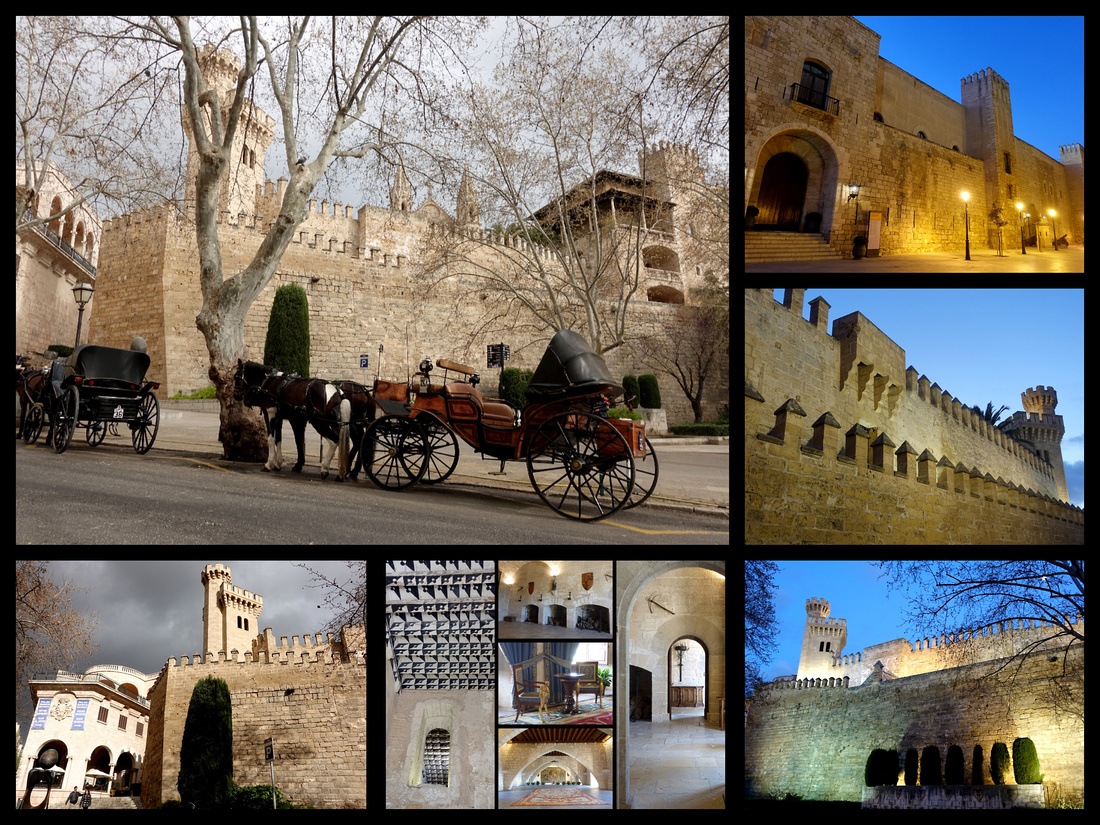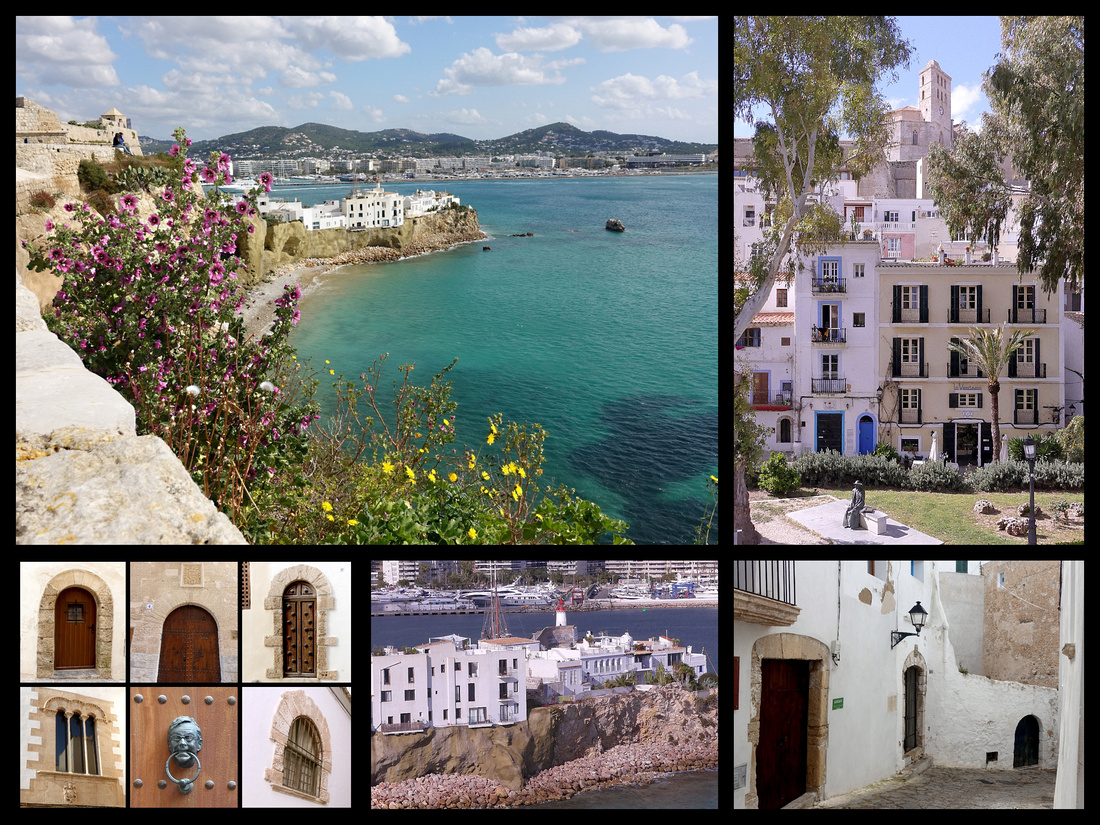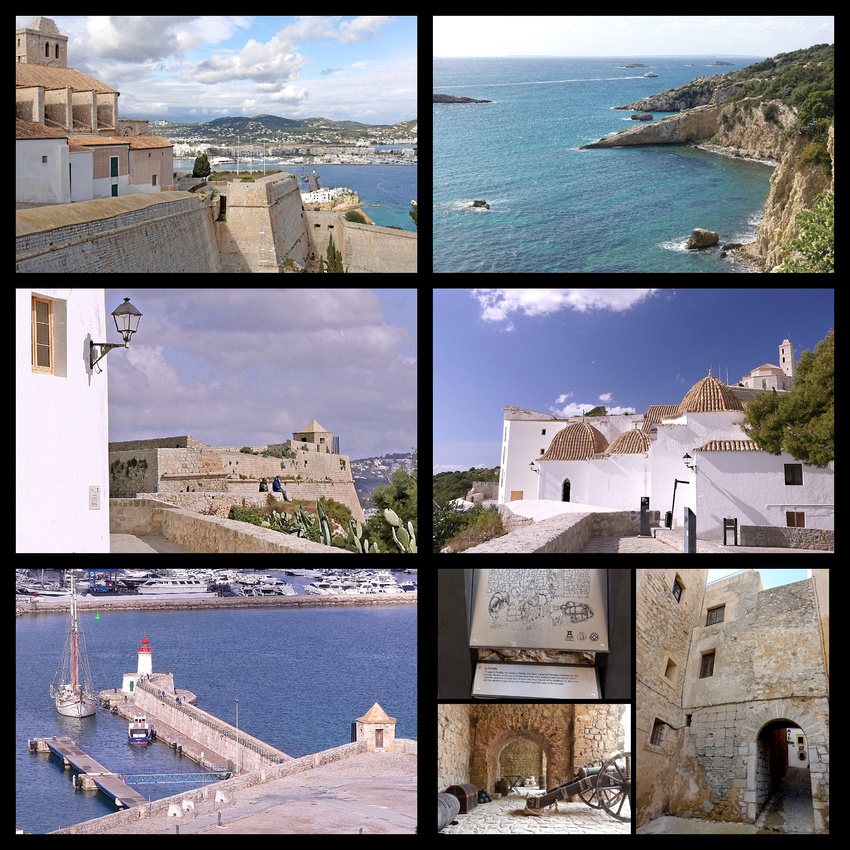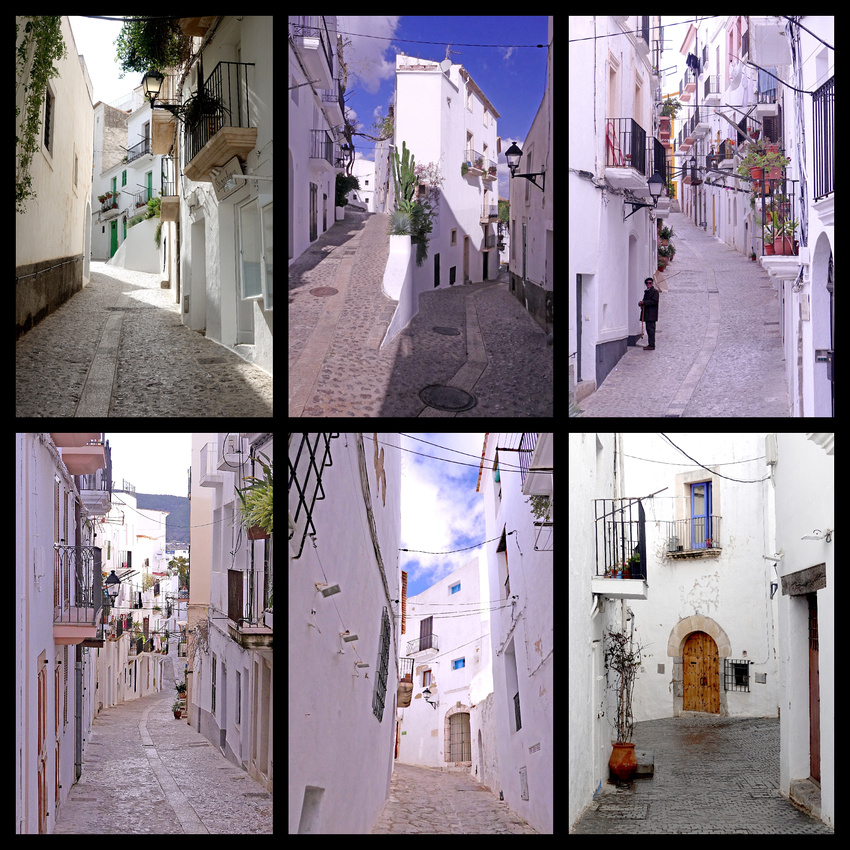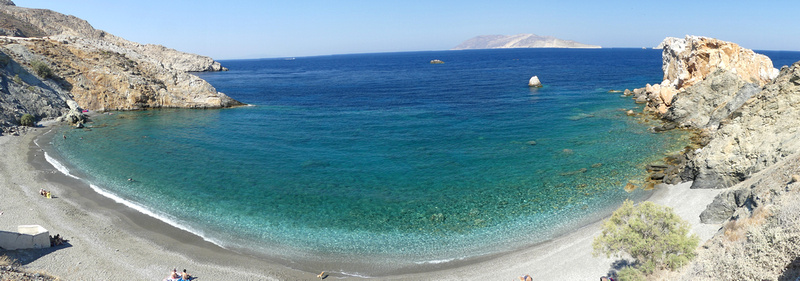


Spring in Spain - Part 1: Mallorca and Ibiza
The second half of March is a perfect time to visit Spain. I spent 4 nights on Mallorca, took the ferry to Ibiza for 2 nights, flew to Barcelona for 3, took the train to Tarragona for 2 nights and then on to Valencia for 4. Other than a few days on Mallorca/Ibiza, the temperatures were mid 60s to high 70s and beautiful sunshine.
Mallorca - We had 4 nights so 3 full days on Mallorca which was the perfect amount of time for us. We did a half day trip to the village of Valldemossa and another half day trip to Soller and spent the rest of the time exploring Palma.


Palma de Mallorca
Day 1 - Our first full day was gorgeous sunny and 70s and we explored the whole town. Palma is a fairly large city (350,000) but the historic center is fairly small, probably less than 1 km in diameter. There are a number of avenues and ‘passeiges’ with 19th century architecture and central pedestrian promenades, and a good size area of narrower streets and alleys and several small plazas. There are a few stepped streets but overall the center is fairly flat.
By far the main attraction is the Cathedral and Palace, right next to each other (almost blending in as one large ensemble). Built up onto the old city walls, down below is the huge reflecting bay in the Parc de le Mer (with a giant water fountain in the center shooting a water jet high into the sky), just inland from the Paseo (Avenida Gabriel Roca), the main road along the Bay of Palma which stretches over 5 km of coastline, with paths for cyclists, pedestrians and vehicles. The promenade just opposite the cathedral and palace, sitting up above the ramparts, had views that, for me, made the trip to Palma worth it.
Cathedral of Santa Maria, is a Gothic masterpiece. Sunlight through the stained glass rose window (one of the largest in Europe) gives the interior an amazing colored glow. The cathedral is built of gold sandstone, begun in 1229 and took 600 years to build. Some of the 20th century renovations were undertaken by Modernist architect, Antoni Gaudí (only noticeable thing was one small chapel). Only the cloister was rather mediocre. €8


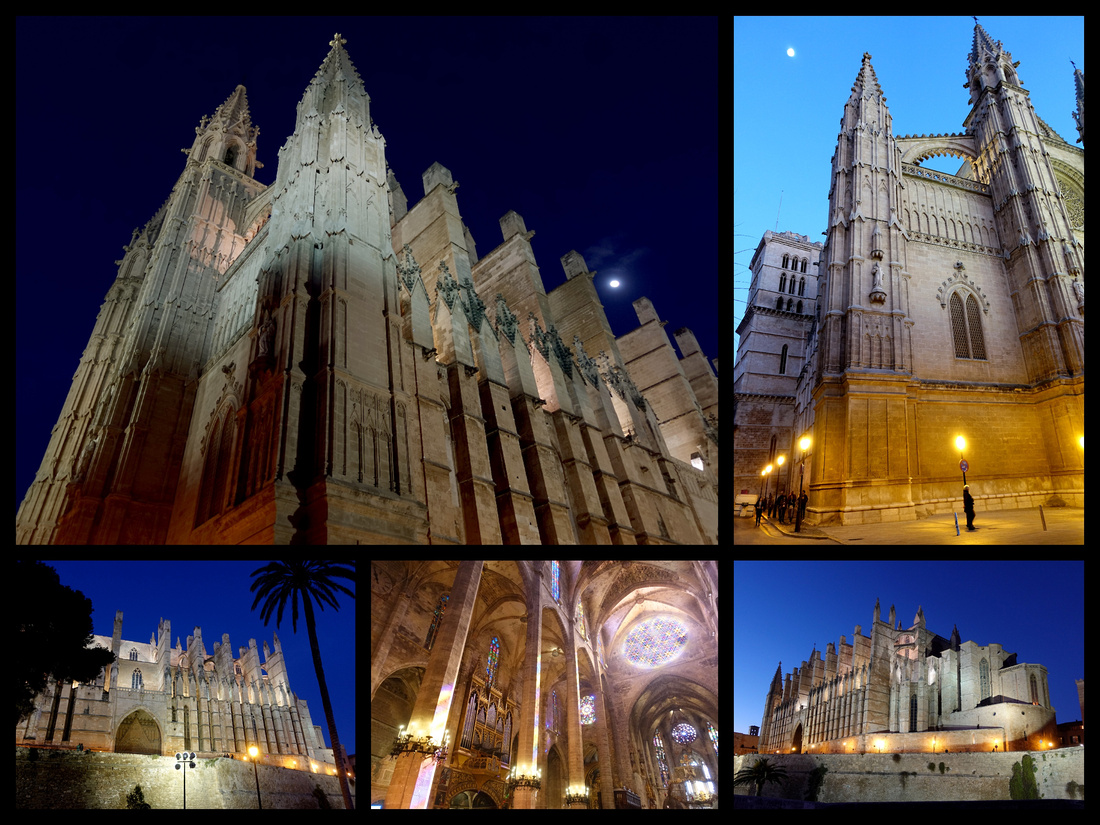

Across the narrow plaza is the Palau de l’Almudaina, (€7) The former Alcázar Real, built first by Muslim rulers in 1281, then significantly modified by the kings of Arágon over the next few centuries. There are a series of cavernous stone-walled rooms. The first narrow room you enter has a black-and-white ceiling, symbolizing the extremes of night and day, darkness and light. You then enter a series of three grand rooms. The rooms have period furniture, tapestries, etc. In the main courtyard, Patio de Armas, lion statues and fountain are rare Arab remnants. There are several terraces and courtyards and great views over the city and the harbor.


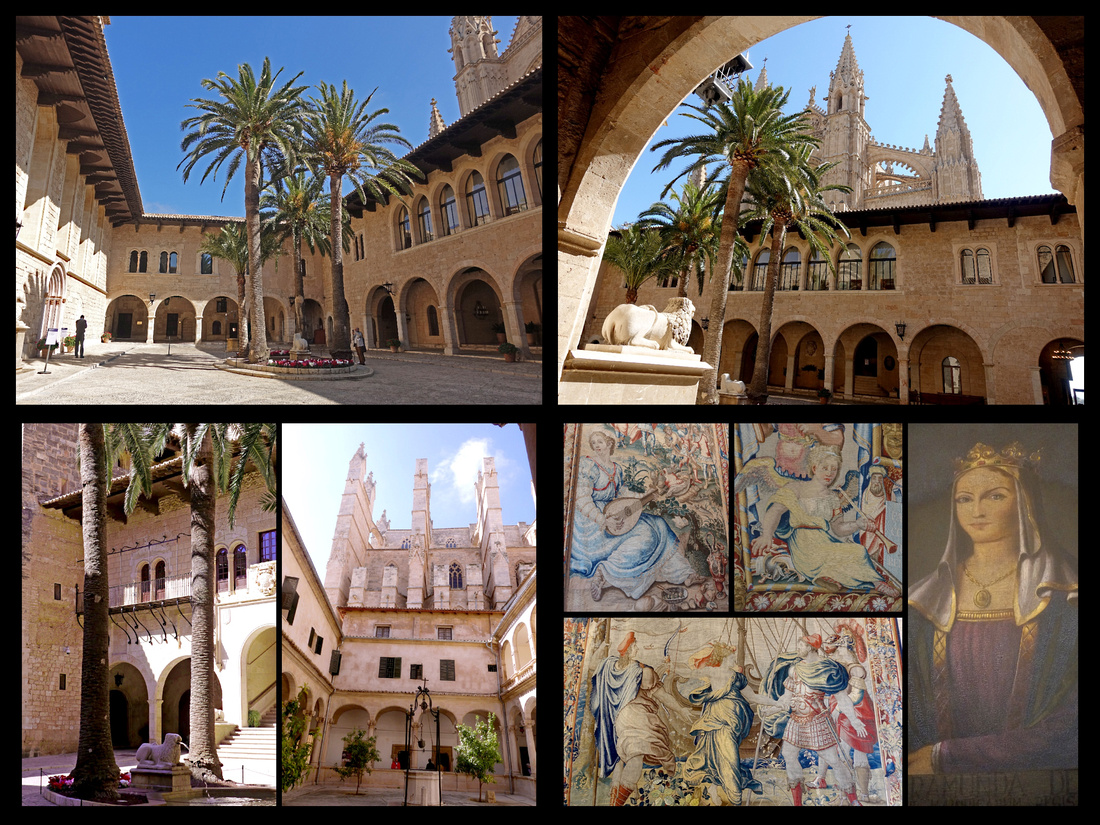

In front of the Palace, the Placa de la Reina with a large central fountain, is the beginning of Passeig del Born, the main shopping street, a tree lined pedestrian central promenade with cafes and street performers. Beautiful 19th century buildings line both sides of the passeig and house stores (designer plus the common international chains) and restaurants and tapas bars. One especially interesting building (between Zara and H&M) is Casal Sollereic, near the top end of the Passeig. The passeig is only a couple blocks long and not as wonderful as some (jaded traveler here, seen too many wonderful places).
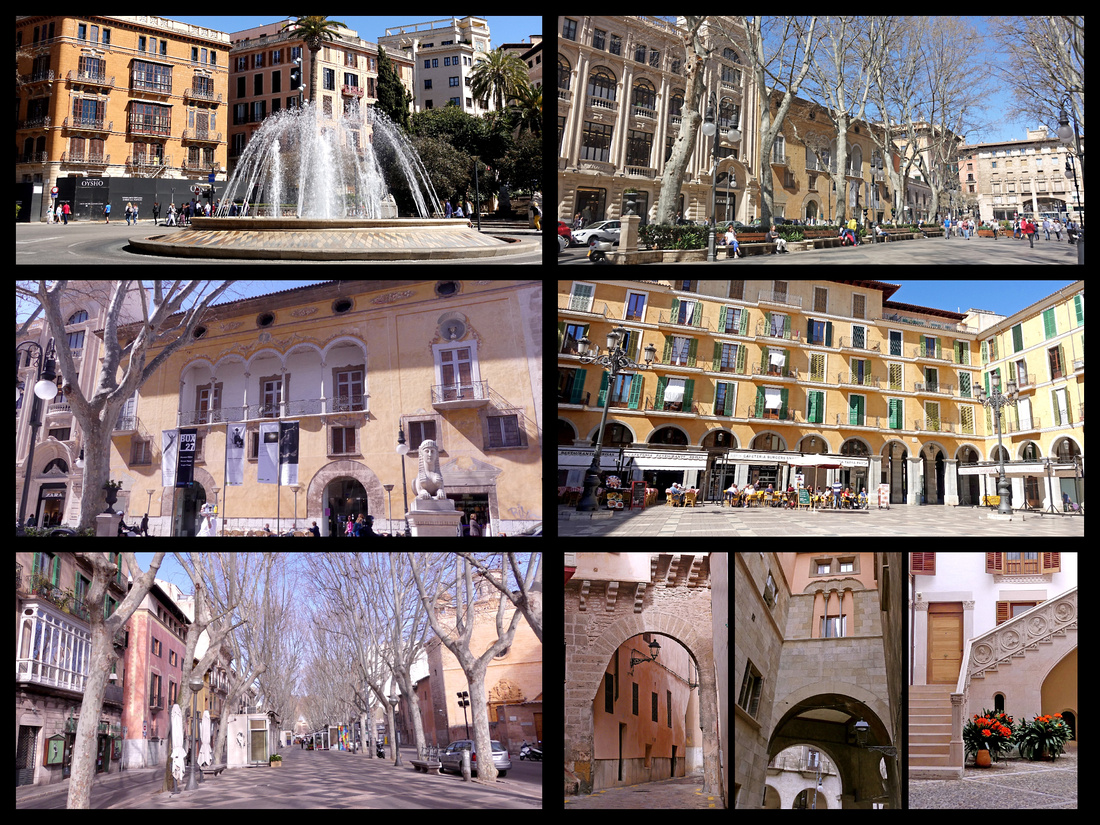

Top Left: Plaza de la Reina Top Right: Passeig del Born Middle Left: Casa Sollereic Middle Right: Plaza Mayor
Bottom Left: Las Ramblas Bottom Right: Streets of Palma old town
The ‘main part’ of the old town is behind the cathedral, a maze of small streets and plazas. Only a block or so up from the Cathedral is Placa de la Cort, a cute little square with one of the most interesting buildings in all of Palma, the Ayuntamiento. The front of it looks like a pretty typical Spanish town hall, but from the side it looks like a castle. Just around the corner from that is another cute plaza Placa Santa Eulalia with the church of the same name. Streets from here lead towards the main plaza, Plaza Mayor, a 19th century square reminiscent of Plaza Mayor in Madrid (and probably many other Plaza Mayors in Spain) only gold instead of Madrid’s red.
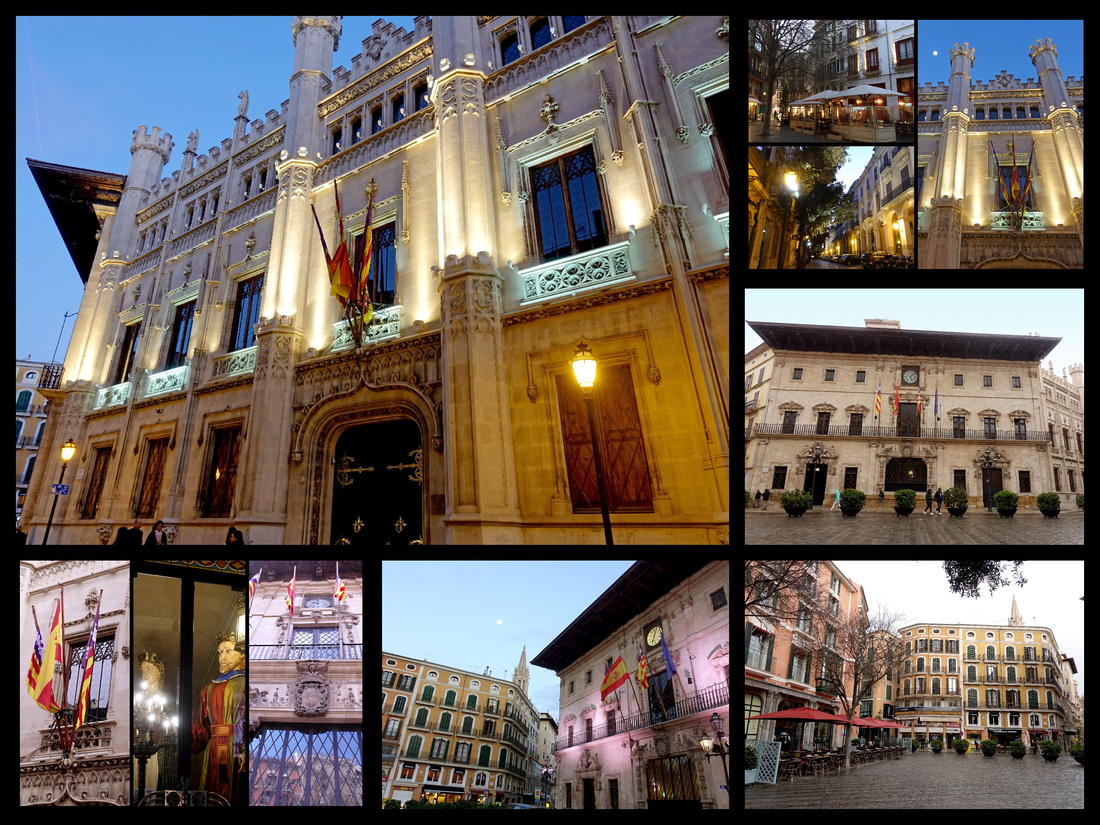

Above: Placa de la Cort and the Ayuntamiento
Just before you get to Plaza Mayor is one of the best modernista buildings in Palma, Can Forteza Ray - Gaudí spent ten years on the island, and the longevity and success of the Modernist movement in the Balearics is largely attributed to his presence. Can Forteza Rey is a wonderful example of the Modernist Art Nouveau movement. The highly stylized decoration of the façade is continued into the interior of the building (where there is a great pastry/coffee shop). The five-story building was originally intended as an apartment block and has sculptural decorations with superimposed fruit, flowers, and animals, using multicolored tiles, wood, iron and glass. There is a huge terrifying face flanked by winged dragons on the second floor. Plaça del Marquès del Palmer.
A few blocks in the other direction is Placa Mercat home to several other modernista buildings, Can Casasayas and Pensión Menorquina - These two buildings were designed in 1908 and are separated by a narrow street. There had been plans to build a bridge to connect the two, but planning permission was not granted. The buildings have matching façades and interior layouts strongly influenced by Modernist and Art Nouveau styles. Gaudí’s influence is strongly evident in the parabolic window and doorway arches, as well as the undulating style. Placa Weyler is technically a separate square but really runs into Placa Mercat, and features the most interesting of all the modernista buildings, the Gran Hotel. Palma is no Barcelona, but it has the best modernista buildings I’ve seen in Spain outside of Barcelona. Also on Placa del Mercat is Can Berga, built in 1677. The front is heavy with stone balconies framing the portal. Interesting to have such diverse architectural styles in one small area.


Above Top: Can Forteza Ray Bottom left: Hotel Gran Middle: Can Casasayas and Pensión Menorquina Right: Can Berga
Tucked down some narrow alleys just behind the cathedral are the Arab Baths. Smaller than some in Spain but quite well preserved (€2.50) There’s good signage (necessary cause you’d never find them without it). The only intact Moorish building in Palma, they were discovered only 100 years ago, but date to the 10th - 12th century, when Palma was an Arab city known as Medina Mayurqa. Thought to have been attached to a private home rather than a public hammam. The (mainly Roman) columns in the domed roof tepidarium (warm room) are all different and clearly salvaged from different places. The baths are set in a secluded garden of the Can Fontirroig manor house. The biggest room, has 12 columns supporting a dome with round openings which were meant to allow the steam to escape. There was a video playing on a loop in both Spanish and English explain the baths.
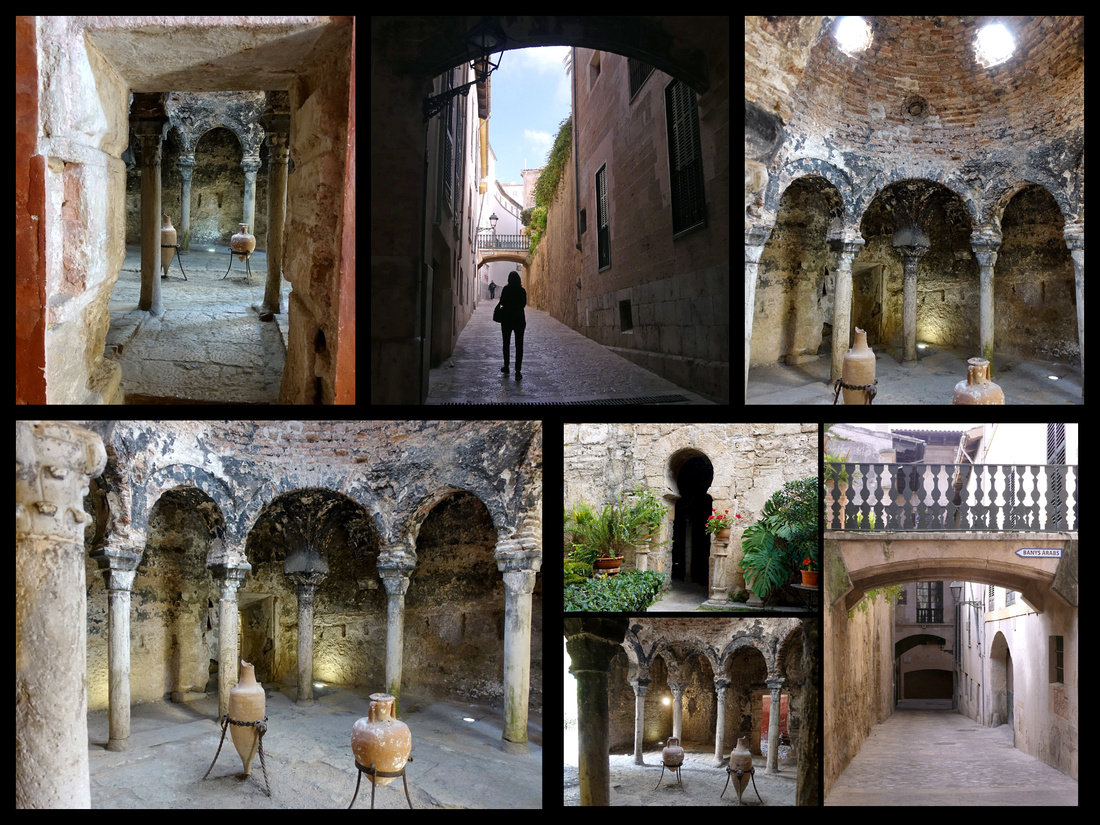

One block on the other side of the Placa de la Reina is the Llotja - beautiful building with crenelations, turrets and delicate stone masonry that was once a major mercantile exchange and meeting place. Built between 1420 and 1452, the ribbed vault ceiling is divided into twelve parts each with its own spiral pillar resembling the palm trees lining the outside pavements. The Angel Custodio visible above the main entrance holds a band reading ‘Defender of Merchandise’. The view from the Gothic-style arch windows into the courtyard behind it is pretty. Free.
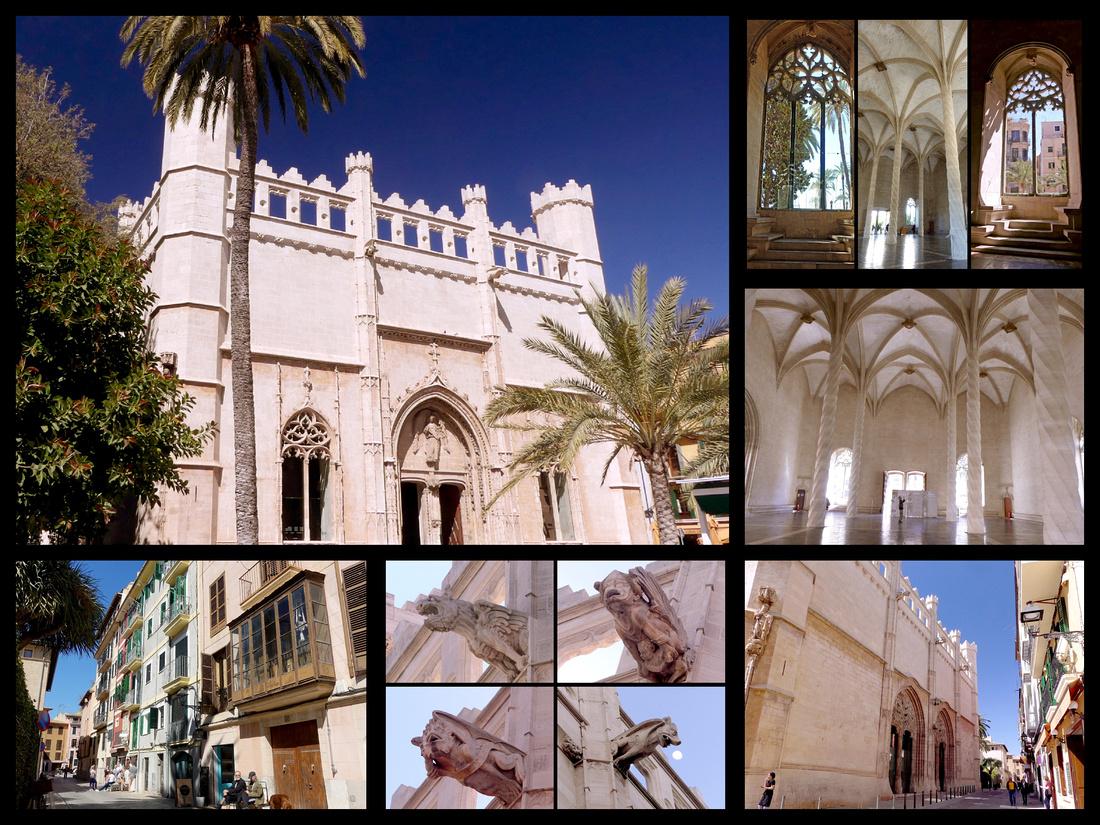

We explored all the above, including sitting for a while in the sun in the Parc de la Mer and then wanted to go up to the Castell de Bellver so inquired at the TI how to get there. Apparently the public bus, which didn’t seem to run all that frequently only went part way up, there’s another ½ hour up hill walk. But the Hop On Hop Off bus goes there so we figured it might be interesting, by this time sitting for a while sounded like a good idea anyway. The HOHO bus does get you up to the castle but a taxi probably would have been cheaper (HOHO was €18) and the rest of the 1¼ hour loop either went by stuff we had already walked by, or to very boring residential areas. So I don’t recommend it. But the castle is worth seeing.
Castell de Bellver, €4 Erected in 1309, was the summer palace of the kings of Mallorca—during the brief period when Mallorca had kings. The castle, which was a fortress with a double moat, is well preserved. The chief attraction here is the view—the name, Bellver, means “beautiful view.” It is perched on top of a wooded hill over the Bay of Palma, and is unusual in being one of only a few circular castles in Europe and the only one in Spain. It has three semi-circular towers, and a further large tower attached by a bridge over the (now dry) moat. The spectacular inner courtyard has a series of Gothic arches around it on the upper floor. Inside there are numerous rooms with archaeological findings. We had a light lunch at the very mediocre café.
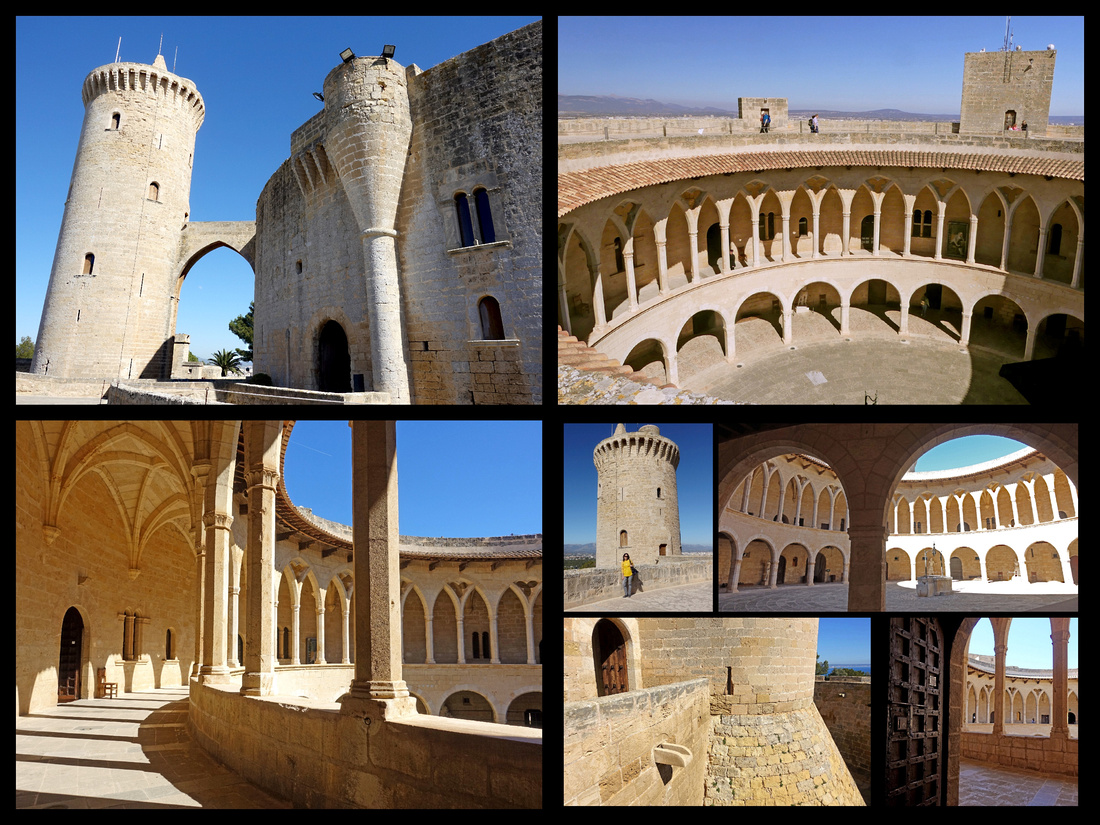

Day 2 - Another absolutely gorgeous day, high in the low 70s, not a cloud in the sky.
We went to the train station with the intent of taking the 10:10 train to Soller. We got there at 9:00 to find a huge long line. After waiting over an hour we discovered that all the trains that day were sold out. They were having a special (€13 instead of €32 normally, including tram). That combined with it being a beautiful Sunday must have caused a much larger than average crowd (who seemed to be mostly locals).
So we took the HOHO bus (tickets still good from yesterday) to the Spanish Village – similar to the one in Barcelona only smaller. But just as nicely done, almost deserted. Was worth the hour or so we spent. Poble Espanyol – (1.5 km from Passeig de Mallorca), €6 – An overview tour of Spanish architecture, showing its development through Muslim and then Christian influences. A total of 22 replicas in 1: 2 scale. There is a reproduction of the baths and patio from the Alhambra Palace, a “barrio andaluz” (a street from Andalucía), a ‘Plaza Mayor’, a copy of the Santa Catalina tower from Valencia and several other interesting streets, plazas and buildings. I think Crista was a little bored but I really enjoyed it.
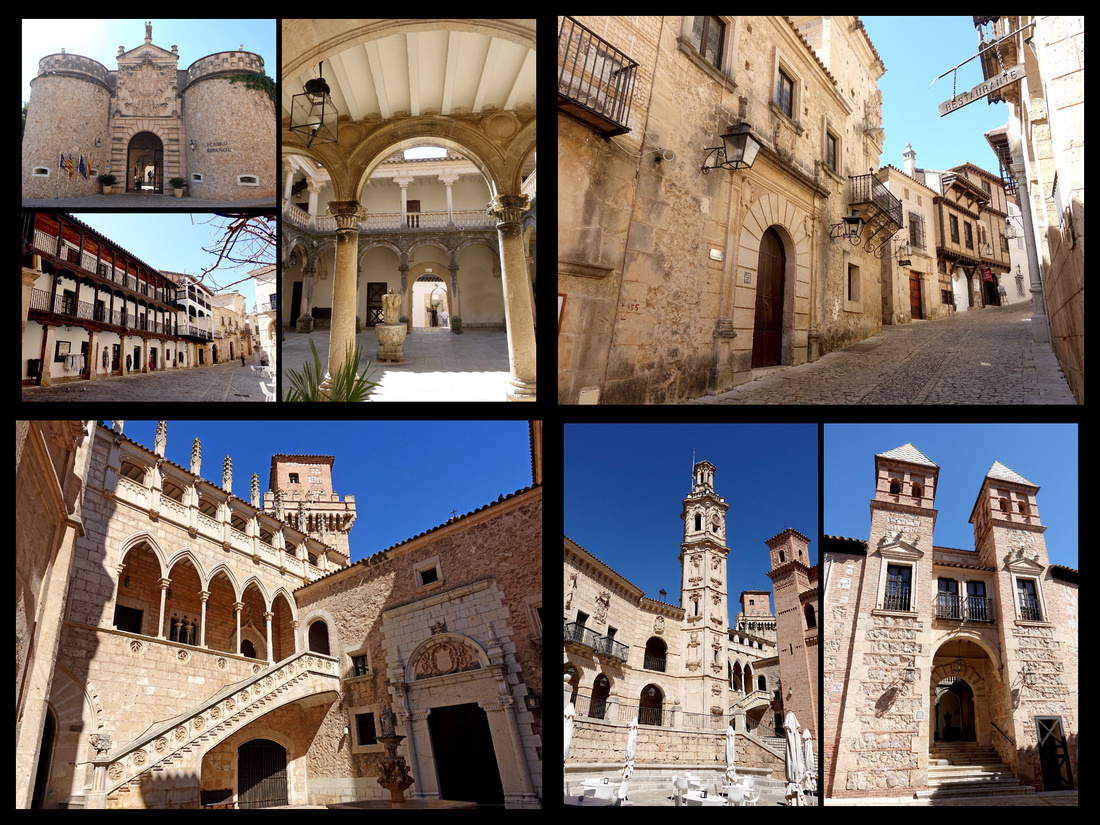

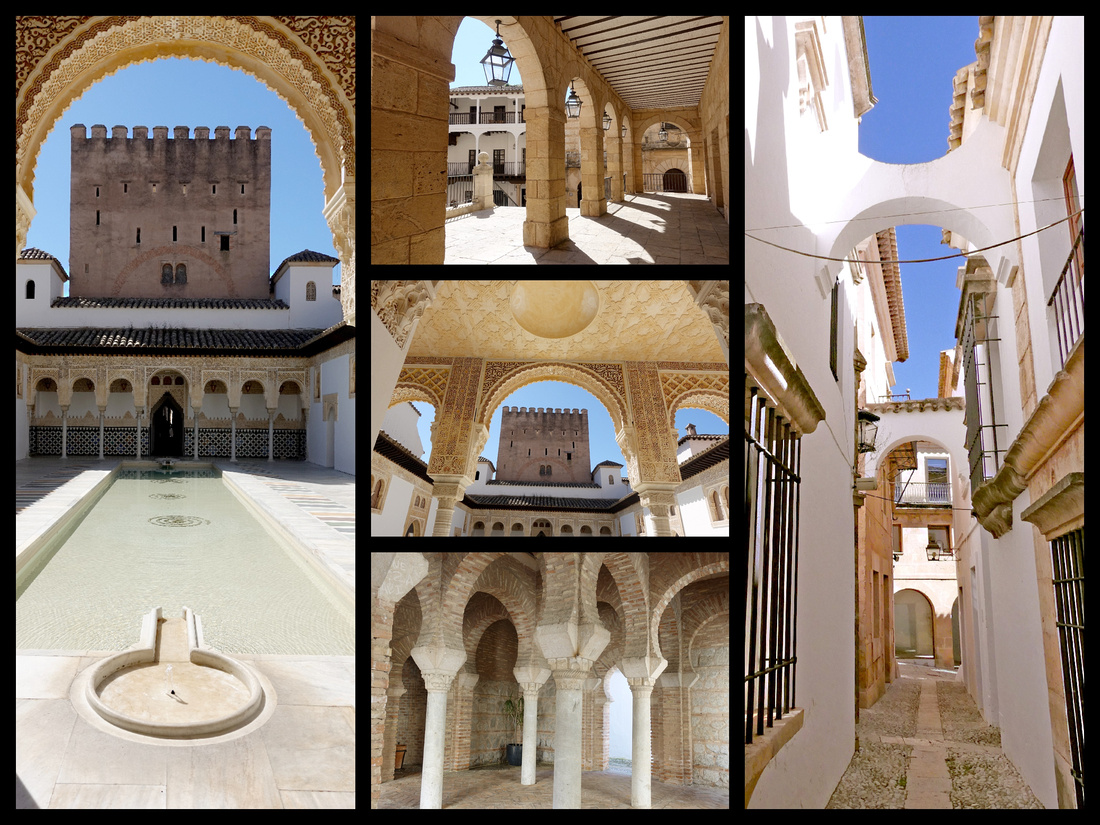

Rather than wait for the next bus we walked back through town along the town walls - which run right by the harbor and are quite extensive.
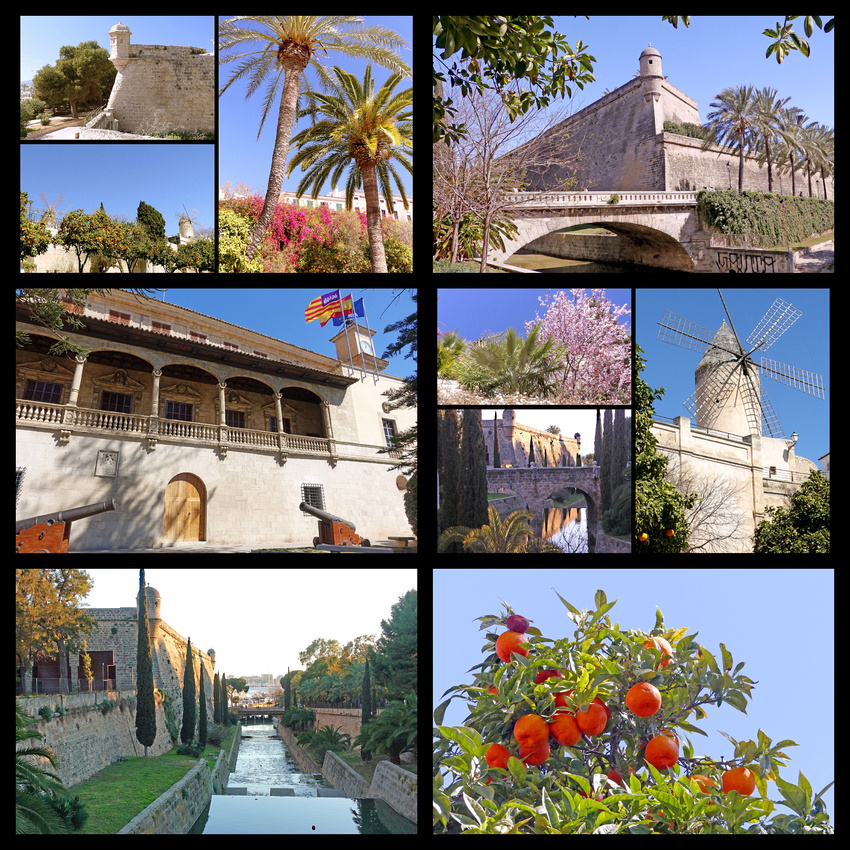

Back at Plaza Espagna we got the bus to Valldemosa (½ hour, €2 each way). Very cute little hill town, population about 2000, sprawls down a hillside in the Tramuntana mountains (which are a UNESCO World Heritage Site), bigger than it looks, you can get lost for a few hours exploring the tangle of cute cobbled alleys, tree lined streets, old stone houses. Valldemosa is famous for Cartoixa Reial, where George Sand and Frédéric Chopin wintered in 1838 and 1839. The monastery was founded in the 14th century. After monks abandoned the dwelling, the cells were rented to guests, which led to the appearance of Sand and Chopin, who managed to shock the conservative locals. Unfortunately it was closed Sundays. Also unfortunately since it was Sunday our choice of buses back to Palma were in one hour or 5 hours. We opted for five. We easily used up about 3 just walking around, shopping, and having gelato in the sun. Then stores started closing around 5 and sun was going down and not a lot of inside dinner options. But the one we did find was great – we got steak and fries that were cooked in garlic and peppers. Very good meal for €19. Then only about a 20-minute wait in the cold (and now dark) for the 19:30 bus back.




Day 3 - This started three days of cool and rainy, the only time in the whole two weeks that wasn't perfect weather. We discovered when buying our bus tickets to Valldemossa that the train is not the only way to Soller, there is also a bus (€3, 40 minutes each way). Through the nice mountains – but not really spectacular, not sure what makes it a UNESCO site. Lots of stone terraces, lemon and orange trees, olive groves, some other fruit trees just flowering. Some sheep, few goats, horses. Pretty enough but I’ve seen much better. The town of Soller itself didn’t look like much – fairly large, might have had a cute center but the area the bus could go in was unimpressive. We stayed on to Port de Soller. Of course all of this would have been better in the sun. Medium size bay with lots of boats (wintering over, sailboats, yachts, didn’t see much in the way of fishing boats). Tons of seafood restaurants, some post card shops. The cute little tram only runs once an hour. We walked the whole length of the bay, climbed up as far as we could – decent view of the harbor on one side and some cliffs into the water on the other side. But after two hours and starting to rain we just got the bus back to Palma.


Days 4 and 5 - On to IBIZA - We took the ferry, reserved in advance, which was supposed to take 3 1/2 hours but only took 2 (fast ferry?). Large, comfortable inside seating which was fine given that it was pouring rain but wasn't the 'sitting in the sun on the open deck' trip I had pictured. But it was efficient, a bus was waiting at the port and then a ten minute walk to the Vera del Rey Rooms. It rained some, was cool, windy and cloudy most of the two days we had on Ibiza but the sun came out a few times and two days was more than enough to explore the town. Better weather and more time would have been necessary to rent a car and explore the rest of the island. I choose to visit Ibiza in the off season as I didn't want the crazy party scene of summer but did want to see it. However I didn't expect it to be as closed down and deserted as it was. The weather didn't help I'm sure.


Ibiza is the other main Balearic island. It's well known for the very lively nightlife where major European nightclubs have summer outposts. Ibiza's art colony began to thrive in the 1950s, and in the 1960s it became the European resort most favored by the flower children. Today, Ibiza is overrun by middle-class package-tour visitors, mainly from England, France, Germany, and Scandinavia. It has become a major mecca for gay travelers as well. Birthplace of rave, Ibiza has some of Europe’s most famous clubs. But the rugged coastline is interspersed with dozens of sandy beaches, unfortunately most now consumed by intensive tourist developments. Still it’s a UNESCO mixed World Heritage site because of the old town/castle and the island's rich sea life. The Old Town is the area of the fortified citadel (D’alt Vila) and the old fishing area (Sa Penya) just below it. D’alt Vila was founded by the Phoenicians over 2500 years ago. There are traces of the Moors, and museums display artifacts from various periods of the island's history, including Phoenician, Carthaginian and Roman. A ramp leads from Placa de sa Font in Sa Penya up to the Portal de ses Tablas gateway, flanked by Roman statues, the main entrance to D’alt Vila. Steep streets and alleys lead up to the Cathedral, which overlooks everything. The original 14th century part is Catalan Gothic with additions later in the Baroque period.
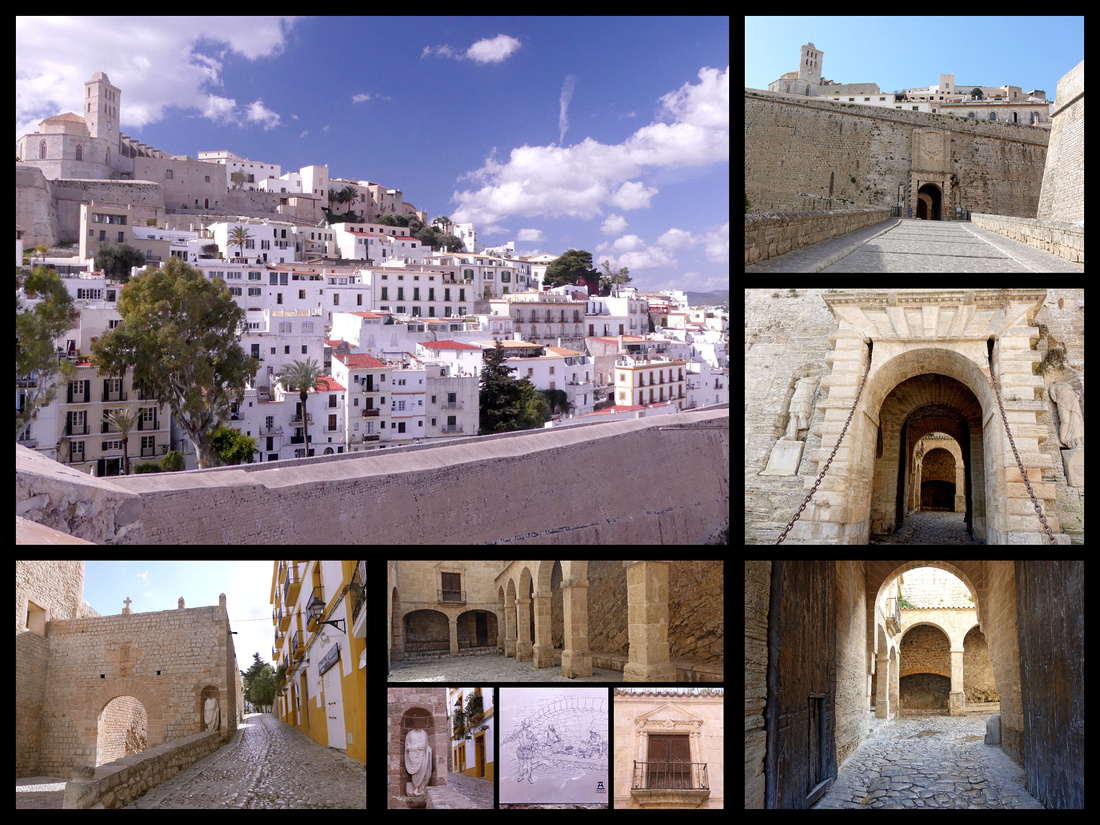

The castle is a lot larger than it looks from the water. You can walk all the way around the perimeter on ramparts, lots of outlooks. And in the center of the ramparts is the old town, very Greek (Cycladic island) looking with narrow lanes of white and stone buildings, great views out to the water.
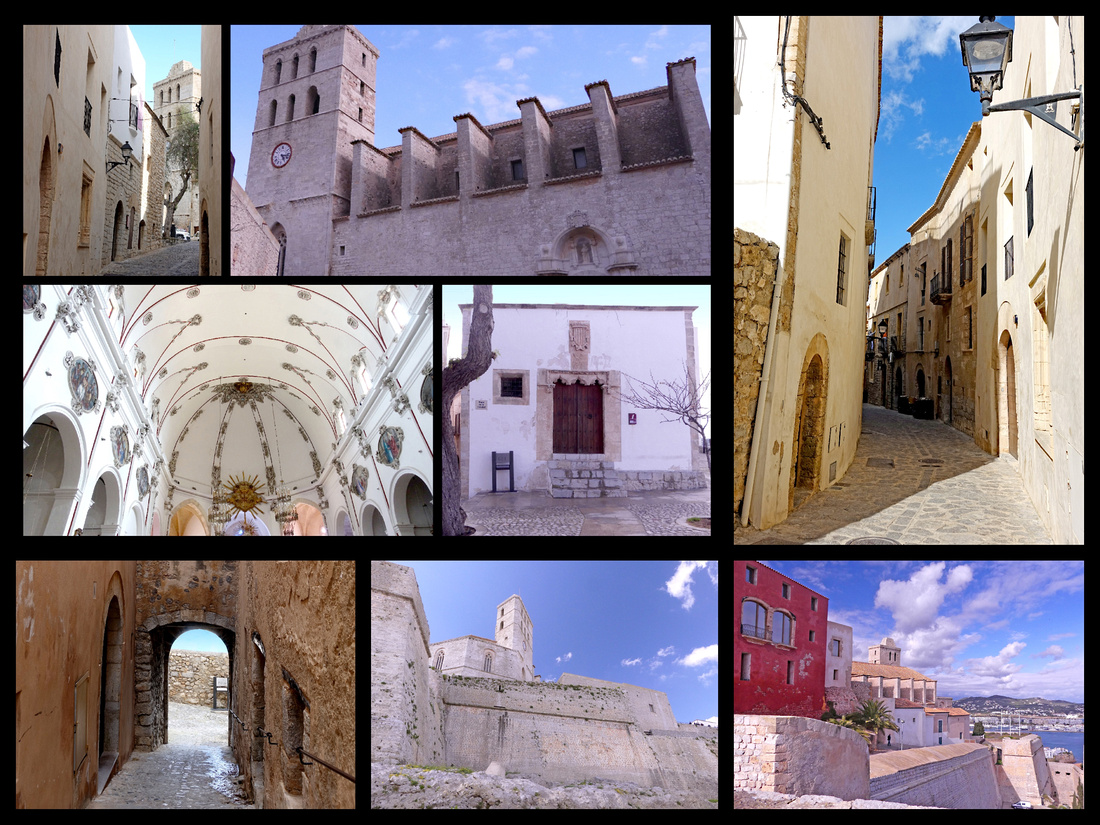



Between D’Alt Vila and the harbor is Sa Penya, a jumble of narrow streets and lanes lined with whitewashed shops, bars and restaurants. Most of these were closed for the season in March – very deserted. And the higher up you went the dodgier it got – lots of trash, broken bits of furniture and machinery, dog poop, graffiti.
The lower main part of the city is essentially very boring; mid 20th century pretty ugly buildings housing stores, businesses, and apartments. There is one large graceful plaza – Passeig de Vara de Rey with beautiful town houses from the beginning of the 20th century, tree lined with pavement cafes and a nice large statue in the center. Our 'rooms' - Vera de Rey' were on this plaza.
We did have some good eating experiences despite probably the better places being closed. There was a bakery right next to the hotel with amazing whole grain croissants (Quinoa and spelt). I don't normally associate 'whole grain' with 'croissants' but these were excellent. For dinner our first night we went to a tapas bar our hostess recommended Can Terra, and it was wonderful. There was a huge selection of tapas sitting out on the bar and everything was €1.70, just take what you want and keep the toothpicks so they can add up the total when you are done. Nice atmosphere - it was a bar, lively but not crazy, some patrons appeared to be tourists but most were clearly locals (did I mention there aren't many tourists on Ibiza in March). We had a great time but unfortunately about four hours later I was pretty violently sick - obviously food poisoning. But then I was able to sleep and was fine the next day.
In addition to exploring the town we visited two small museums and an historic house. Museu Puget features father and son artists we had never heard of but had some nice work and the building was very nice (and out of the cold and wind). Casa Erwin Broner is in the Sa Penya area. Broner was a German architect and designer who came to Ibiza, then went to America where he worked on Alice in Wonderland with Walt Disney, then back to Ibiza. He built the house to blend in with the other white cube type, similar to the Cyclades Island architecture, but with unique design features. The other museum was the Puig des Molins which is built on the site of a Phoenician necropolis that is considered the best preserved in the western Mediterranean. Early 7th century BC settlers, who gave the island it's name, buried their dead here and Phoenician, Punic and Romans followed. Some nice skeletons.


